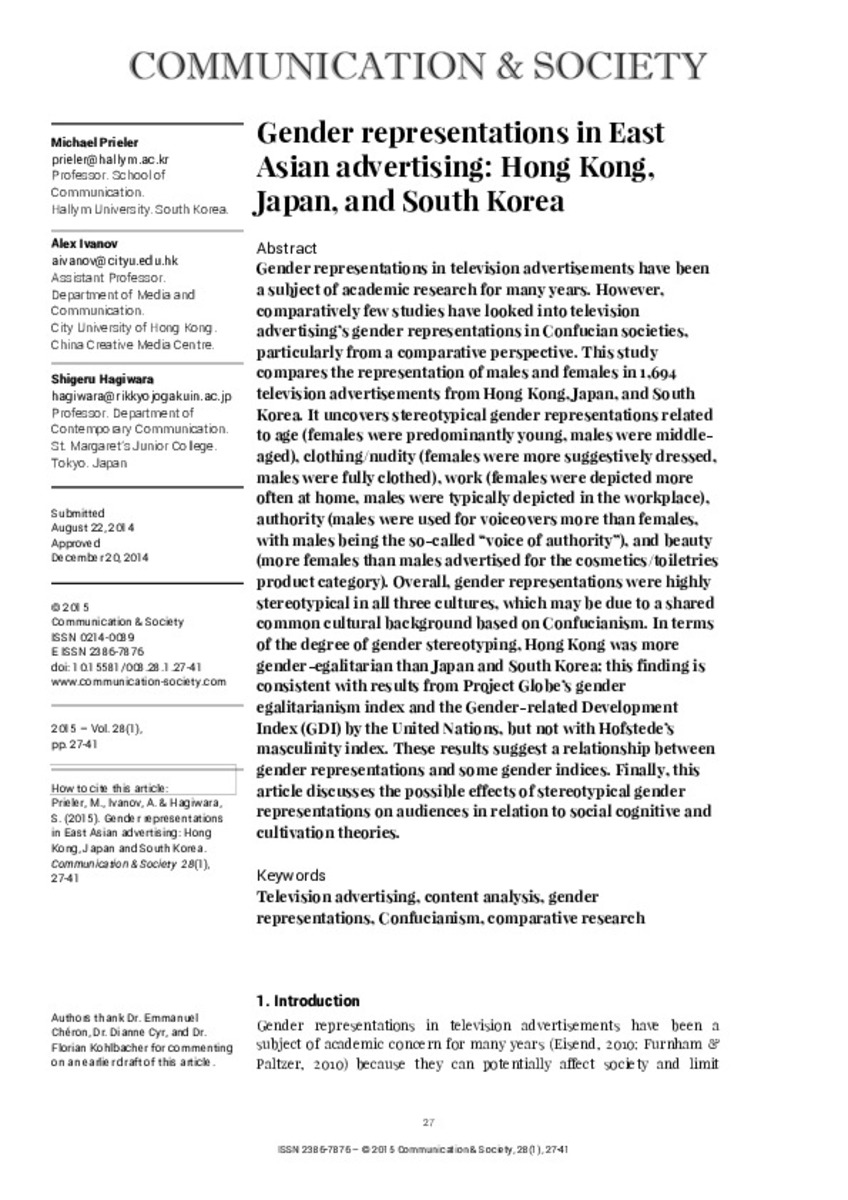Gender representations in East Asian advertising: Hong Kong, Japan, and Shouth Korea
Palabras clave :
Television advertising
Content Analysis
Gender representations
Confucianism
Comparative research
Materias Investigacion::Comunicación
Fecha de publicación :
2014
Editorial :
Servicio de Publicaciones de la Universidad de Navarra
Cita:
Prieler, M.; Ivanov, A; Hagiwara, S. (2015) ""Gender representations in East Asian advertising: Hong Kong, Japan, and Shouth Korea"". Communication & Society 28 (1), 27-41
Aparece en las colecciones:
Estadísticas e impacto
0 citas en

0 citas en

Los ítems de Dadun están protegidos por copyright, con todos los derechos reservados, a menos que se indique lo contrario.







